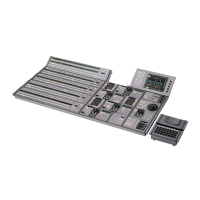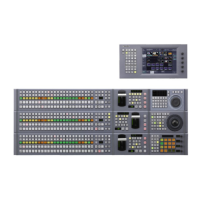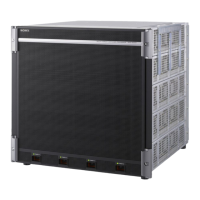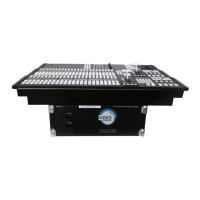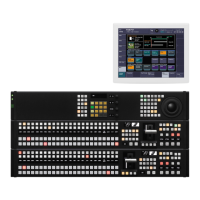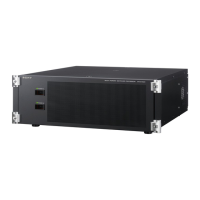Chapter
13
Keyframe
Effects
Range of execution
Each time the [RUN] button is pressed, the range of
execution of the effect is from timecode 01:00:00:00 or the
current time (the position at which the current effect is
stopped) to the end point of the effect. However, if there is
a pause set on a keyframe, the execution range is up to that
point. Pressing the [RUN] button again resumes the effect,
which then runs to the next pause point or the end of the
effect.
Run mode setting
You can select from the following run modes for when the
effect is executed.
DIRECTION: Specify the effect execution direction.
STOP NEXT KF: Run the effect, and stop at the next
keyframe.
EFFECT LOOP: Repeat the effect in an endless loop.
Make these settings in the keyframe control block.
For details, see “Setting the Run Mode” (page 462).
Master Timelines
You can save the regions selected for a keyframe effect
and the register numbers saved in the regions in a master
timeline register so that operation can be applied to two or
more regions at a time.
To save master timeline registers, use the numeric keypad
control block, Multifunction Flexi Pad control block or
menu; to recall them you can use the numeric keypad
control block, menu, the Flexi Pad control block or the
Multifunction Flexi Pad control block.
For details, see “Creating and Saving a Master Timeline”
(page 464).
Specifying the region and edit points (see
page 448)
Select the region in which editing applies, and set the
edit points.
v
Creating and editing keyframes (see page 450)
Create the keyframes that make up the effect, using
operations to create, insert, modify, or delete
keyframes.
v
Time settings (see page 458)
Set the overall duration of the effect or the duration of
each keyframe.
v
Path setting (see page 460)
Set the type of interpolation used between successive
keyframes.
v
Executing effects (see page 461)
This provides a smooth effect, based on the time and
path settings.
v
Saving effects (see page 463)
Save a completed effect in a register.
Sequence of Keyframe Operations
The following table shows the principal operations
involved in the sequence from creating keyframes to
executing an effect. For details of each operation, see the
page number in parenthesis.
For the overview of keyframes, see “Keyframes” in
Chapter 1 (Volume 1).
Recalling a register (see page 444)
To create a new effect, recall an empty register; to edit
an effect, open the register containing it.
v
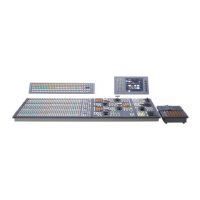
